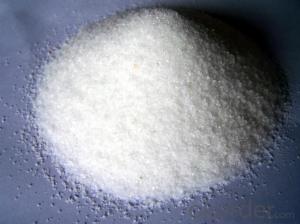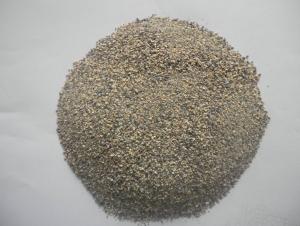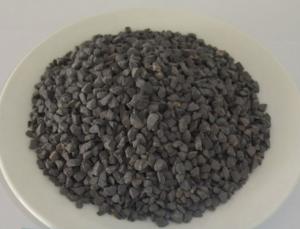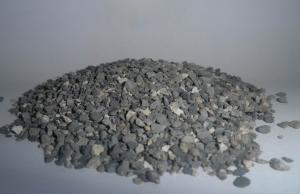Raw Materials for Refractory:Abrasive White Fused Alumina 180#-220#
- Loading Port:
- Tianjin
- Payment Terms:
- TT OR LC
- Min Order Qty:
- -
- Supply Capability:
- 1000MT m.t./month
OKorder Service Pledge
Quality Product, Order Online Tracking, Timely Delivery
OKorder Financial Service
Credit Rating, Credit Services, Credit Purchasing
You Might Also Like
Specification of Abrasive White Fused Alumina
Item | Chemical Composition | |||
Al2O3 min | NaO2 max | SiO2 max | Fe2O3 max | |
12#-60# | 99.15 | 0.26 | 0.08 | 0.05 |
60#-100# | 99.15 | 0.28 | 0.09 | 0.06 |
120#-150# | 99.1 | 0.29 | 0.10 | 0.08 |
180#-220# | 99.05 | 0.31 | 0.12 | 0.1 |
230#-800# | 98.5 | 0.5 | 0.15 | 0.1 |
1000#-1200# | 98.1 | 0.6% | 0.18 | 0.1 |
Packaging & Shipping
In 1MT jumbo bag or as the buyer request.
We ship the cargo in 20' GP containers,each container loads 25MT/20bags.
Application of white fused alumina
Made of abrasive, suitable for grinding hardened alloy steel, high speed steel. Fine-grained flour is also used for precision casting.
- Q: What is the main constituent of refractory brick?
- The main constituent of silica?brick is monox, etc. Refractory bricks have many kinds of texture. The main constituent of high alumina brick and clay brick is aluminium oxide. The main constituent of every texture is different. The main constituent of magnesia bricks and magnesia-chrome bricks is magnesium oxide.
- Q: What brands are the best in the A-level refractory materials?
- 1 International (It is a well-known brand in the field of global boats and protective coatings, the products are famous for its safety, strength and smoothness, Akzo Nobel (China) Investment Co., Ltd.) 2 LANLING (It is a high-tech enterprise, and a large provider of industrial coatings, started in 1980, as well as a famous brand of Jiangsu Province, Jiangsu Lanling Chemical Group Co., Ltd.) 3 Champion (It is a high-tech enterprise who is involved in developing a number of industry standards, it is a industry-leading brand brand of Jiangsu Province Jiangsu champion coating Technology Group Limited)
- Q: Procedures for producing common refractory materials?
- The general procedures of producing refractory materials include calcination of raw materials, selection of raw material , crushing, grinding, screening, mixing, ageing mixture, molding, drying, burning and etc. At present, the refractory factory usually purchases the calcined clinker, so the calcination of raw material is no longer a consideration of common refractory plants.
- Q: What kinds of refractory will be used in kiln of sintering ceramics?
- High alumina brick, clay brick, insulating brick and silicon carbide plate.
- Q: How many hours of the fire endurance time of the rock wool laminboard?
- This is depending on the fire rating, about two hours and the better one, 5 hours.
- Q: What are refractory materials?
- Refractories can be divided to two categories based on the shape and three categories according to the chemical nature of acidity, neutralily and alkalinity. Alkaline refractory materials are magnesia-carbon brick, magnesia chrome brick, calcium magnesium brick and magnesia-chrome bricks. Neutural refractory mateial are high alumina brick, corundum brick and clay brick. Case-hardened refractory materials are castable, ramming mass, gunning mix, coated mix, dry vibration material, etc.
- Q: how to classify Insulating Refractory ?
- Insulating Refractory by the physical form of the material is divided into: thermal insulation refractory slab, thermal insulation refractory blanket, thermal insulation refractory loose wool, and thermal insulation refractory irregular part. thermal insulation refractory material can also be classified by materials, temperature, manufacturing technique and application area.
- Q: What is the the best matching ratio of refractory cement?
- Refractory cement is very easy to use. Add some water and mix, and it will harden. Generally there is no need to add other binding agents, but you can add some refractory aggregate and powder. If you use only refractory cement, it will produce a lot of cracks after high temperature. Generally refractory cement can withstand temperature of about 1300 degrees. Refractory cement can be used together with ordinary sand, and the ratio of cement and the sand is about 30 percent.
- Q: Which refractory is better for building 1500 degree kiln ?
- High alumina brick or 99 alumina hollow ball brick is OK, which can withstand a temperature of 1600 ℃.
- Q: what's the materials of fireproof?housing?
- what's the materials of fireproof?housing? what's the fire?rating? how much is it? What are the key installation points?
Send your message to us
Raw Materials for Refractory:Abrasive White Fused Alumina 180#-220#
- Loading Port:
- Tianjin
- Payment Terms:
- TT OR LC
- Min Order Qty:
- -
- Supply Capability:
- 1000MT m.t./month
OKorder Service Pledge
Quality Product, Order Online Tracking, Timely Delivery
OKorder Financial Service
Credit Rating, Credit Services, Credit Purchasing
Similar products
Hot products
Hot Searches
Related keywords























